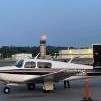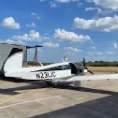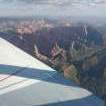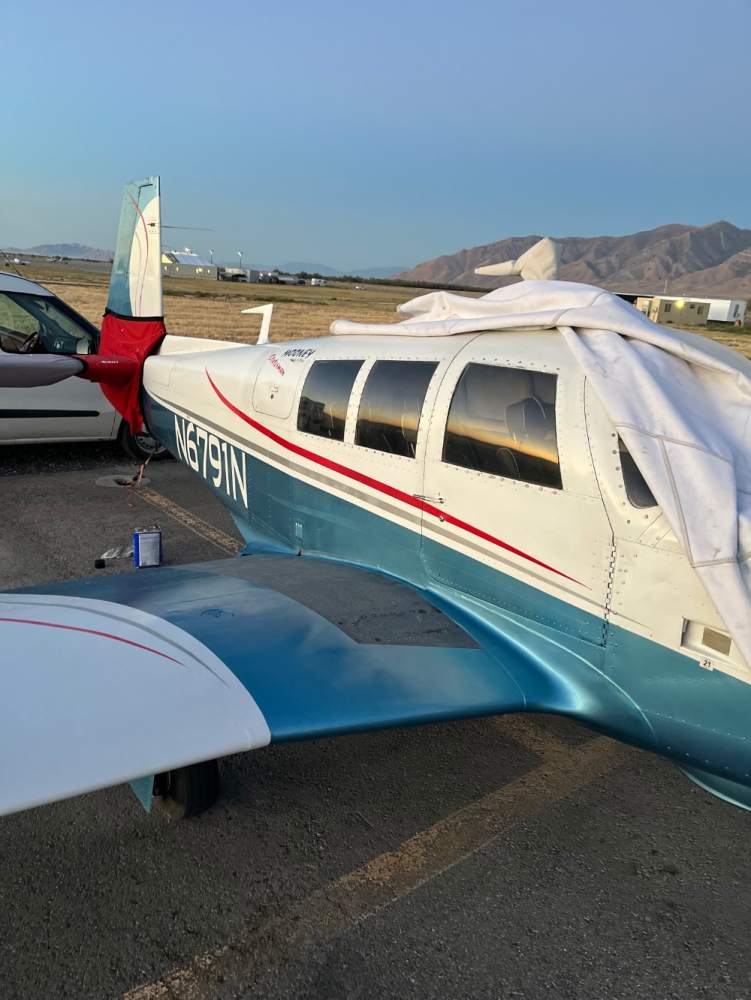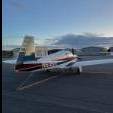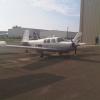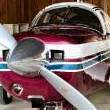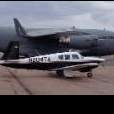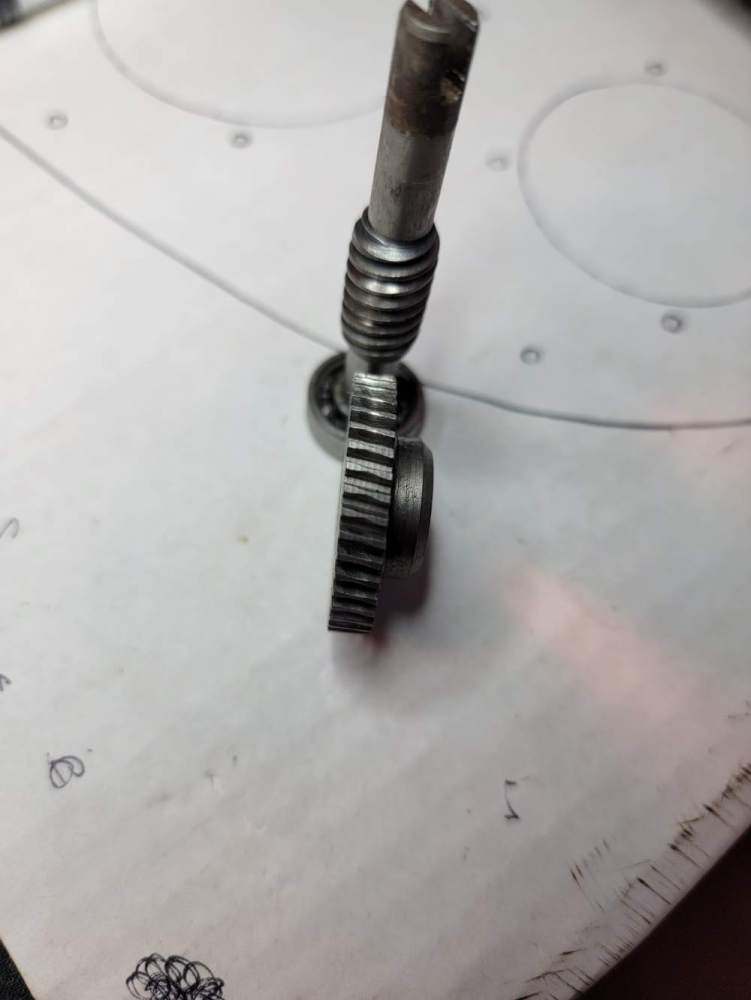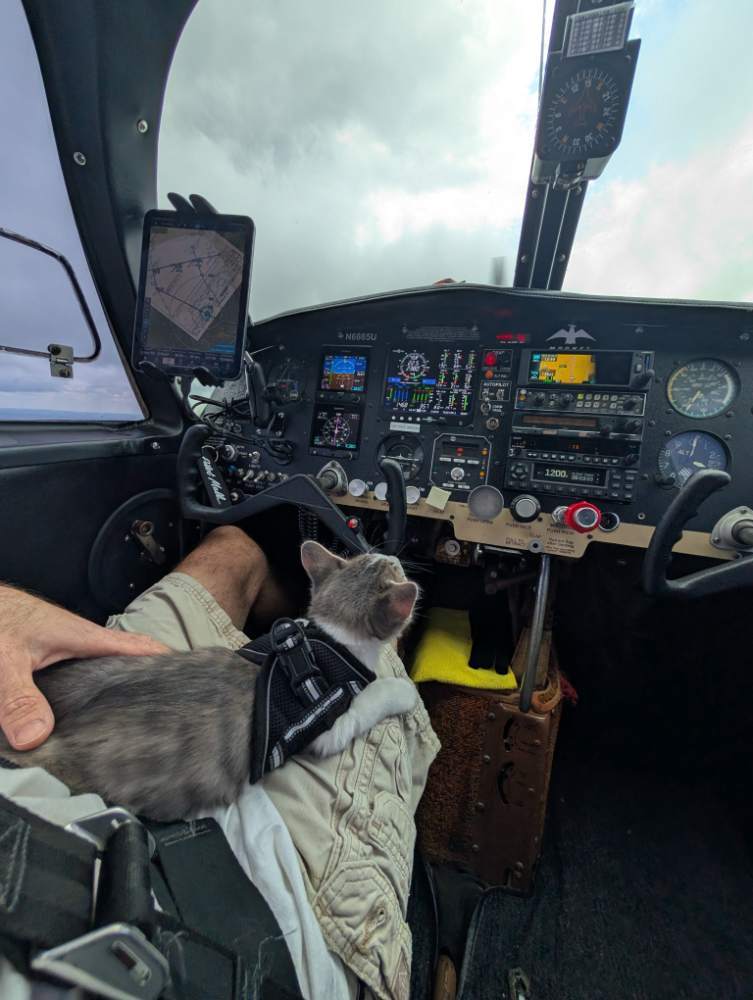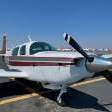Leaderboard
Popular Content
Showing content with the highest reputation on 09/24/2024 in all areas
-
How exactly would all the engineering data be put in public domain if they went out of business? Would owners break in at night and steal it? I'm not sure to what A.D. you're referring, but Mooney doesn't issue Airworthiness Directives, the FAA does. You might be referring to a Service Bulletin, which Mooney does release, regarding the weights on your elevator: https://www.mooney.com/wp-content/uploads/2022/12/sbm20-345A.pdf Then later the Service Instruction which provides you a page for your POH: https://www.mooney.com/wp-content/uploads/2023/01/sim20-145.pdf). To this issue, they didn't have a knee-jerk reaction and ground the airplane. Step 1 was to do an inspection and if the correct weights were found, no further inspections were needed. Step 2 if you had the weights that were mentioned then a more detailed inspection was made to see if there was cracking. Finally if the cracking was found then Step 3 was to replace them. When you look at the pictures on the Service Bulletin you can see why they were concerned. They spent resources that could have gone other places to engineer a solution for owners. Would they have been able to do that if they were out of business as you wish? The relationship between owners and the company doesn't need to be adversarial. We all should want the same thing. The people right now at the factory could find work elsewhere, probably paying a lot more money, with better benefits. They take a lot of pride in producing parts so that owners can keep flying their Mooneys. Whenever I have the opportunity I let them know how much I appreciate what they are doing.5 points
-
I have had to order a couple of parts that Mooney makes. There was a lead time, but they made them and shipped them out. A couple of things I needed, were in stock. The big problem is those parts that they do not make in house, but are sourced from a vendor, but require Mooney to QA them to meet their PMA. Due this and the legal agreement between the maker and Mooney, they cannot be sold to us directly. At Mooney Max, we asked about pre-paid ordering to limit the drain on Mooney's cash. Johnny said the problem is, the vendors have 6 - 8 week lead times, and he could not guarantee the the doors would be open to receive, QA, and ship them that far out. But he thought they were close to some investors pumping in some cash, and they have a list the most requested parts and they will get ordered ASAP. And no, the IP from Mooney does not go into the public domain because they go out of business.3 points
-
This subject comes up on here every few weeks by people that stop by. Mooney makes parts Monday through Friday every week. They have 34 employees and ship things out every day. Will the part you order be on the shelf? Probably not, although some common ones are. They are doing their best at the moment under difficult circumstances to keep 7,000 Mooneys in the air. As you've discovered, a rudder bell crank for a 57 year old airplane is not in stock. (It also wouldn't have been if you had placed your order 6 years ago when they were making airplanes.) When you place your order through a Mooney Service Center that part is back-ordered. If it's a part that they produce, when they have a back-order that becomes large enough to make a minimum number of that part, they do. On some parts the minimum it takes is very few. It wouldn't be cost-effective for you or them to turn out one of those parts. As you've also discovered, salvage parts keep the older Mooneys flying and have for many years, even while the factory had 300+ employees. Companies in the U. S. like https://baspartsales.com/ part out Mooneys and are very good to work with. In this link there are some recents comments from MooneyMax 2024, where Jonny Pollack, CEO spoke on a video call:3 points
-
Here’s a great change for pilots. You can now text friends and family using satellites, and it’s not just for emergencies anymore. Here’s a support doc describing it. I tried it out on Thursday and it worked well. https://support.apple.com/en-us/1209302 points
-
It was a short in the gear down lamp holder (floor indicator light). Mechanic resoldered the lamp holder and that fixed it… until it shorted again. Then traced it to the led bulb also shorting out with the lamp holder case. We swapped back to the conventional bulb and no more short or tripped breaker. I have a new lamp holder coming in to see if that’ll work with led bulb otherwise sticking with original bulb type.2 points
-
I've always wondered what's really going on with the wear. My gears are 20:1 original (at least there isn't any entry in the logs) and are now 54 years old and still pass inspection. What is 'wearing out prematurely?' I like the speed of my 20:1 gears and would much prefer to replace them with new 20:1 gears when the time comes...I won't be around when they 'prematurely' wear out My guess (and it's only a guess) is that the gears that wear out were not regularly inspected and regreased properly. Maybe the 40:1 will take that kind of abuse?2 points
-
From another forum - " "Lycoming engines manufactured before 1964 (1971 for 540 series and 1975 for 720 series) were of narrow deck design. These engines used cylinder base hold down plates and internal-wrenching type cylinder base nuts. After these dates, Lycoming engines became "wide deck", Wide deck engines have regular hex type cylinder base nuts and a thicker cylinder base flange (approximately 3/8" thick). The thicker cylinder base flange makes the wide deck engines slightly wider than the narrow deck engine. The switch from narrow deck to wide deck did not change the model number of the engine even though cylinders and crankcases are not interchangeable. Another method you can use to distinguish narrow deck from wide deck is by the engine serial number. If the serial number ends with the letter "A" it is wide deck-; e.g. L-82374-27A." This is from the "Sky Ranch Engineering Manual" by John Schwaner on the operation, failure and repair of piston aircraft engines. This is a very good book and is available at http://www.sacskyranch.com/ or in Trade-A-Plane." The same post references info from Lycon that the wide deck are more prone to cracking.2 points
-
From what I understand, Mooney Engineers designed the gearing to be used in the actuators and therefore the gears (drawings) are Mooney proprietary that are produced by a 3rd party vendor, which is still in business and CAN fabricate the gears but Mooney REFUSES to take/place an order for us. Johnny is just as frustrated as we are as he's very customer focused, he's asked about alternatives, on behalf of some customers, but he's ignored by the engineers that he poses the questions to.2 points
-
Good morning, still working the issue but feel that it's now become stonewalling. From what I understand, 60 years ago Mooney contracted to have the actuators made but using their engineered gear set which is manufactured by a 3rd party, so the drawings and specs are Mooney proprietary and Mooney will not release them nor say who they used to manufacture them, I have asked the CEO if they refuse to have them produced than why not license them to i.e. Lasar so that 1, Mooney can make a little money and 2 we can get the frigging parts....all I got back thus far is a, I'll call you this afternoon, well, that was a week ago. If anyone can send me an old set so I can get a metallurgy (destructive testing) report done, that would help as I already had a new set loaned to me and had them scanned and I have the CAD drawings for, I've also petitioned the FAA, Certification Branch, under the OPP guidelines, for a copy of the drawings and technical specifications since there is still an active SB and Mooney refuses to have the parts produces, so that's where we are at..wish I had better news and was closer that we were 4 months ago.2 points
-
2 points
-
As others have said you don’t want to sand bare aluminum because of the Alclad layer. The technique I use for this situation is I prep the bare aluminum with alodine and then spray the area with primer. The transition will be very noticeable but at this stage that’s ok. Take a small piece of 400 grit sand paper and use your finger tip to sand just that transition line. The goal is to remove the line without going through the primer. If you begin to go through, apply more primer and then continue. Once the line is gone spray again with primer and sand again. Use Wet/dry sandpaper and use plenty of water. Then you should be ready to spray your color coat. This probably sounds time consuming because it is, but it’s also very cheap if you don’t value your time. You’ll probably never get a 10/10 paint job but I think you can get it to an 8 with some effort. here is a before and after from last weekends work, keep in mind I need to wet sand and buff the clear coat to even out the sheen, currently it looks a little splotchy. I also need to respray the silver stripe. While I’m doing the one in the blue I’ll also respray the one above in the White. This project probably took 8 hours of labor so far and is not complete. All but an hour was monotonous sanding, cleaning and taping.2 points
-
My trick to starting the TSIO-360-LB engine cold is to follow the checklist. Most important, when the engine is cold, It is important to prime enough - 4 full seconds with the throttle full open and the mixture rich. After priming, I reduce the throttle so it's now about a quarter of the full travel - more open is good - then I start the engine. It usually fires off after two blades pass. If it still hesitates I thumb the primer while it's sputtering and it become happier.2 points
-
2 points
-
There are two different major flavors of Lycoming 360 engines. With a lot of variation in compression ratio. O-360s are mostly parallel valve and lower compression. 180 HP. There are parallel valve IO-360s that may run on MOGAS. They were originally certified on 91/96 AVGAS. The 200 HP IO-360s are angle valve and higher compression. And I don't think any can be run on MOGAS.2 points
-
New to me 1970 M20F. I've been flying with a CFI for meeting insurance minimums. (note: insurance first year is heavy, as I have no complex time, but about 400 hours and instrument rated). Anyway, what I'm noticing is that when the flaps and trim are set at the 'takeoff' suggestions, the back of the plan wants to lift off, and ride the nose. This doesn't seem 'right' to me. When I lift off, I have to use a LOT of pull on the yoke to keep the nose up, and find that immediately trimming nose up really helps. Is this typical? Seems odd to me, and I'm thinking the plane is out of rig. Once trimmed up, and flaps up, it flies fantastic. My CFI doesn't have a whole lot of hours in type, so he's not much help. Is it possible the trim is out of whack, and need to be 'centered' properly? When landing, I'm full up trim by touch-down. I figured I'd ask the hive to see what direction I should go. I either put the trim where I don't have to crank back on the yoke, or I figure out why it's doing this.... Overall, I'm quickly falling in love with the plane. I picked this particular model (M20F) for its efficiency and useful load, and value for $ - in other words, it fits my mission, and short of spending A LOT more money, I'm not going to get anywhere faster or higher. -Darryl1 point
-
Sounds like you just want to pick a fight. You win; buh bye1 point
-
Yeah, I'm really curious how much it's perception vs. an actual difference. Take off is back to TO flaps and I do get a pretty significant pitch down when I go from TO flaps to Full flaps when I'm on final. That's when I start to roll in more up-trim, and then a little more as I slow from 90 mph to 75 mph. I suspect that flap change is responsible for most of trim change needed when I take off again.1 point
-
I’m still learning about this. It seems the twin Comanche was the first thing to get wide deck engines in 1963 or 64. And then it came from there.1 point
-
1 point
-
I've asked for both parts, 20:1 and 40:1 and was told the same...unfortunately, unless the FAA comes through, I will only have info (CAD drawings and metalurgy report) for the 20:1 gear sets, I'm sure a gear manufacturer could take the drawings from the 20:1 gears and come up with drawings for 40:1, I will certainly ask the question once I get the metalurgy report and able to send out for quotes.1 point
-
1 point
-
The motor cost $10715 the other required parts from bas another $500 let’s say and multiple orders from aircraft spruce for hardwares another $200 bucks maybe. I’m having Jetdriven do the install since he did the same thing to his J. His is a few serial numbers before mine. So I’ve yet to have it installed, but have all the parts. My plane was aog for 3 months and still is but I’m getting it tomorrow before the hurricane smashes it in Tallahassee. There’s quite a few parts that you need to do this conversion that take multiple miracles. I plan on photographing all the parts you need when I get it back tomorrow and documenting the install if I can. My gears didn’t fail but the emergency gear extension cable did. N201MKturbo can make a new one if the ends are good. McFarland can also make a new one for 3 k and 3-4 weeks lead time. I didn’t like the idea of the gears going bad or the cable, so I decided to do the next best option since I fly my plane a lot.1 point
-
@EricJ I'm not an RF guy but you comments match my thoughts suspecting drift. I'll see if I can find a spectrum analyzer to take a look. Only, one transceiver. Yes, we are actively looking for a MX170 or even a proven KX170B to help run this to ground. Thanks for you comments!1 point
-
Wrong term. The issue is the Vapor Pressure, commonly the Reid Vapor Pressure. This is how volatile the fuel is. So at a given temperature, it would exert a certain pressure in a closed container. AVGAS has a single allowable (or a small range) RVP. MOGAS changes from season to season. In winter the RVP is higher for easier starting in cold weather. Since planes travel, you could fuel with winter MOGAS in MN, fly to the Keys, and try to take off on hot day with that fuel. So the testing required a tank of the highest allowable MOGAS RVP fuel, heated to something like 120 degrees F and then a straight climb to the service ceiling. This is the test that many low wing airplanes fail as the engine driven pump is sucking, so lowering the pressure even more that the altitude does, leading to vapor bubbles forming. So some aircraft need a booster electric pump near the fuel tank to push the fuel to the engine. I guess there were not enough low compression Mooneys to justify the engineering and testing for the STC.1 point
-
Not legally but I know of a few scofflaws that have done so. One tank of 100LL and the other 93 mogas. Climb, take-off, and landing on 100LL, cruise on mogas. I was told that switching from 100LL to Mogas increased CHTs by 30-40° all other things being equal. ROI seems low just to save a few bucks. I know of someone who operated an NA C210 this way quite a bit, but for them it was more of a fuel availability issue rather than economics.1 point
-
My opinion of course: The best thing that cold happen to us, the owners, is they just go out of business. They certainly are not supporting the owners. By going out of business it would put all the engineering data in the public domain. Then people who want to make an owner produced parts would have access to the design data. It would also stop these ridiculous ADs that have no value. I had to ground my 60 year old airplane, to perform an inspection on a part that should have been found in an annual. If the the time of compliance would have said at the next 100 hour inspection. But to ground the airplane was an emotional response, not an engineering response. Ok I'm waiting for all the negative comments now, bring them on.......1 point
-
Hello Paul, Seat rollers is easy for us. We recently developed and certified a polymer-made rollers for Bonanza and Baron. Our polymer would not deform like Nylon or Phenolic do. Will certainly check out Lasar's rollers. Juan1 point
-
That makes a lot of sense. It seems like it’s multiple companies who are the cause of these parts being non existent anymore. More the reason why I choked down the price of the Eaton and its back spring issues. Looking over the years of mooneys, they changed quite a few things on them. Gear motor, emergency extension systems, fuel selectors, throttle controls, ventilation system, etc. This is most apparent in my 77J. I have all the weird quirks that they mostly got rid of by 78. Don’t know why they did this but it’s quite frustrating.1 point
-
Well over book, but my a/c has more mods than I would have ever paid for (it was the LASAR model for decades). I can't guess what adds the biggest bang for the buck, but the belly, windshield, and Powerflow are my guess on biggest gains. Cumulatively, all those little 1-2mph mods do add up, however. Also, a fresh strong motor doesn't hurt.1 point
-
I recently ran into the same issue with not being able to get any approved data for my own gear conversion. Mooney wouldn’t hand it out, without the approval of a Mooney engineer. I decided I was going to replace the dukes actuator with the Eaton one and ditch the old emergency extension system. It seems both the actuator and emergency system are composed of a few unobtainium parts. Albeit the most expensive option for the OP it could be a last resort if you can’t get gears for the motor. You’re looking at 10k just for an overhauled Eaton, from Lasar. I don’t see much choice owners have unless they want to play the waiting game for gears, if Matthew can make them… which I hope he succeeds at greatly. Has anyone had the conversation with Johnny about releasing some of these important drawings and information to the general public. Mooney holding them hostage isn’t doing us any good. For our actuators, I know it was all outsourced. A new Eaton runs 30k if you can find one, Lasar has a few apparently. I saw recently in a YouTube video that Comanches use a similar derivative of our dukes. Wonder if they suffer from any of the issue we do?1 point
-
I'm right at book or a hair better. I hoped I would pick up a couple mph when I replaced my 2300 hour engine but she's still the same speed. I have some speed mods, guppy mouth enclosure, 201 windshield, flap gap seals, brake caliper reverse, not sure how much they all contribute, maybe a little. Biggest difference was the power flow exhaust. That was worth 5 mph in cruise at 8,500-10,500. Before that I was a little below book. I have the O-360 which I understand benefits more from the power flow than the injected birds.1 point
-
That sounds like an electric gear issue. I take it yours is manual? As @Ragsf15e mentioned, it’s probably the switch on the throttle sticking so it thinks that the throttle is at idle even when it’s not.1 point
-
While very true, I view the issue a bit differently. Namely, right now I have some larger areas (a few square inches on leading edges) with missing paint; those areas are, not surprisingly, rather obvious and ugly. If I can even poorly feather and fill those areas the fact there is a 'witness line' visible up close is still WAY BETTER than the ugly bare spots now visible. That I can do this myself for not much money is far preferable to spending >$20K to paint the whole plane, or entire panels! My paint is near 30 year old Imron and still is in good condition with good shine...touching up the bare spots, even if not perfect, for little money sounds like a pretty good compromise to me1 point
-
No bragging here. My "F" has most of the mods but barely makes book...and that seems slower than the 'competition'1 point
-
Try Wash n Wax Red. Spray on, wait a minute, wipe off. You're done. Leaves a slick wax-like finish behind. I use terrycloth towels from big box stores, 100% cotton, because they're cheap. But I just bought a perforated roll of tear-off microfiber towels . . .1 point
-
1 point
-
1 point
-
If you have never flown an HSI, they are amazing. First time I flew an HSI, I though I had gone to instrument flying heaven. I would HIGHLY recommend an HSI, either traditional or glass.1 point
-
Strange. After I land, most times I do not need to adjust the trim at all; the trim indicator is split about half-way by the top line of the marking on the side. (My transition training drilled the poem "flaps/flaps/mixture/switches/trim" into my head, and I do this after each landing; i.e., flaps up, cowl flaps open, mixture rich or leaned for ground ops, fuel pump and landing light off, trim adjust to take-off setting. But most times I do not need to adjust the trim at all.) I don't do touch and goes. If I am at my base field, where the runway is short (2900 ft) I always taxi back. If I am practicing at KMSN (10000 ft runway) I stop on the runway, do the poem above, and then go again. Too many touch and go incidents end up in gear ups.1 point
-
Mine is doing the same thing. I live on a field with a museum that has a restoration shop and a paint guru and I’ve discussed with him ways to touch it up. It’s a lot of work to do it right, so I keep putting it off. And, the longer I have waited, the more areas need attention. I have finally concluded that I’d be playing whack-a-mole and it’s time to get it painted. The paint is original from 1994. Paint doesn’t last forever.1 point
-
1 point
-
What about a G5? HSI, and I think it can act as a backup attitude indicator.1 point
-
The seal that leaks is a carbon seal. It leaks when the shaft, or seal wears out. I suspect it is caused by dirt in the fuel. Back in the day the hangar ferries may have replaced the carbon seal with an o ring. It stopped the leak for a couple hundred hours. The proper thing to do is have it overhauled. It would be nice if we could get the repair parts. They are not hard to take apart. Even adjusting the regulator is easy. But I have no idea where to get the parts.1 point
-
O360s handle mogas just fine. It’s the fuel system design that presents a challenge. Peterson offers a mogas STC for all of the following Lycoming engines, but their approval is airframe dependent. Lycoming 0-145-A1, 0-145-A2, 0-145-B1, 0-145-B2, 0-145-B3, 0-145-C1, 0-145-C2, GO-145-C1, GO-145-C2, GO-145-C3, 0-235-C, 0-235-C1, 0-235-C1B, 0-235-E1, 0-235-E1B, 0-235-C1C, 0-235-C1A, 0-235-H2C, 0-235-C2A, 0-235-E2A, 0-235-E2B, 0-235-L2A, 0-235-L2C, 0-235-M1, 0-235-M2C, 0-235-M3C, 0-235-N2A, 0-235-N2C, 0-235-P1, 0-235-P2A, 0-235-P2C, 0-235-P3C, 0-290-A, 0-290-AP, 0-290-B, 0-290-1, 0-290-C, 0-290-3, 0-290-CP, 0-290-D, 0-290-11, 0-290-D2, 0-290-D2A, 0-290-D2B, 0-290-D2C, 0-320, 0-320-A1A, 0-320-A1B, 0-320-A2A, 0-320-A2B, 0-320-A2C, 0-320-A2D, 0-320-A3A, 0-320-A3B, 0-320-A3C, RAM 160 Conversion, 0-320-B1A, 0-320-B1B, 0-320-B2A, 0-320-B2B, 0-320-B2C, 0-320-B3A, 0-320-B3B, 0-320-B3C, 0-320-C1A, 0-320-C1B, 0-320-C2A, 0-320-C2B, 0-320-C2C, 0-320-C3A, 0-320-C3B, 0-320-C3C, 0-320-D1A, 0-320-D1B, 0-320-D1C, 0-320-D1D, 0-320-D1F, 0-320-D2A, 0-320-D2B, 0-320-D2C, 0-320-D2F, 0-320-D2G, 0-320-D2H, 0-320-D2J, 0-320-D3G, 0-320-E1A, 0-320-E1B, 0-320-E1C, 0-320-E1F, 0-320-E2A, 0-320-E2B, 0-320-E2C, 0-320-E2D, 0-320-E2F, 0-320-E2G, 0-320-E2H, 0-320-E3D, 0-320-E3H, 0-320-E1J, 0-360-B1A, 0-360-B1B, 0-360-B2A, 0-360-B2B, 0-360-D1A, 0-360-D2A, 0-360-D2B, 0-360-A1A, 0-360-A1AD, 0-360-A1D, 0-360-A1F, 0-360-A1F6, 0-360-A1F6D, 0-360-A1H, 0-360-A1H6, 0-360-A1G, 0-360-A1G6, 0-360-A1G6D, 0-360-A1LD, 0-360-A1P, 0-360-A2A, 0-360-A2D, 0-360-A2E, 0-360-A2F, 0-360-A2G, 0-360-A2H, 0-360-A3A, 0-360-A3AD, 0-360-A3D, 0-360-A4A, 0-360-A4AD, 0-360-A4D, 0-360-A4G, 0-360-A4J, 0-360-A4K, 0-360-A4M, 0-360-A4N, 0-360-A5AD, 0-360-C1A, 0-360-C1C, 0-360-C1E, 0-360-C1F, 0-360-C1G, 0-360-C2A, 0-360-C2C, 0-360-C2E, 0-360-C4F, 0-360-C4P, 0-360-F1A6, 0-360-G1A6, 0-360-J2A, H0-360-C1A, 0-435, 0-435-A, 0-435-C1, 0-435-1, 0-435-C1, 0-435-11, 0-435-C2, 0-435-13, 0-540-B1A5, 0-540-B1B5, 0-540-B1D5, 0-540-B2A5, 0-540-B2B5, 0-540-B2C5, 0-540-B4A5, 0-540-B4B5, 0-540-A1A, 0-540-A1A5, 0-540-A1B5, 0-540-A1C5, 0-540-A1D, 0-540-A1D5, 0-540-A2B, 0-540-A3D5, 0-540-A4A5, 0-540-A4B5, 0-540-A4C5, 0-540-A4D5, 0-540-D1A5, 0-540-E4A5, 0-540-E4B5, 0-540-E4C5, 0-540-F1B5, 0-540-G1A5, 0-540-G2A5, 0-540-H1A5, 0-540-H2A5, 0-540-H1A5D, 0-540-H2A5D, 0-540-H1B5D, 0-540-H2B5D, R-680-E3, R-680-E3A, R-680-E3B, R-680-9, R-680-13, R-680-E1, R-680-E2, R-680-6, R-680-B6, R-680-D5, R-680-D6, R-680-B2, R-680-BA, R-680-2, R-680-4, R-680-B4, R-680-B4B, R-680-B4C, R-680-B4D, R-680-B4E, R-680-5, R-680-7, R-680-8, R-680-11, R-680-17, R-680-B5, 0-540-F1B5 (Derated for Robinson), 0-320 Series (Derated for Robinson), 0-360 Series (Derated for Robinson)1 point
-
Let's see, you come on here asking, demanding more like, help. And provide virtually no information that might help someone help you. Then you criticize posters for telling you that we need more information. Now you admit both you and your mechanic are 'stumped'?!?? Your mechanic is privy to ALL details yet you act like there's some 'secret' we are withholding from you when we don't magically give you "the answer?" Does any of that seem remotely a rational or polite way of getting help?1 point
-
1 point
-
When people didn't know any better and were using Simple Green, it wasn't the surfaces that were the problem - since those are painted and get wiped off. It was that part of the spray mist that would get into the crevices. There was a good presentation on corrosion at Mooney Max 2024 and there were pictures that showed what some products can do after they have seeped into areas. It was pointed out that in recent years the number one deal breaker on pre-buys on vintage Mooneys is corrosion. Also another point of concern when doing the belly is gravity - a drop of many of these products ending up in our eyes is not good. Twenty five years ago a friend of mine who was an outstanding mechanic and pilot burned one of his corneas by Simple Green ending up in his eye. Eye protection is a good idea.1 point
-
I use Aero Cosmetics Wash n Wax, Red, on the belly. Spray on, wipe off, almost zero effort. It easily removes both oil and exhaust residue.1 point
-
In parallel, trying to see if we have the annunciator be fully functional despite the changes to EIS. After reviewing the schematics, looks like only the fuel quantity might need some work. Analog output from fuel senders sends 0.1 to 4.7 V. Maybe the GEA-110 or GI-275 discrete outputs can provide this functionality to indicate low fuel. Color coded the annunciator lines for the schematics if anyone is interested. ElectricalSchematics-AnnunciatorPanel.pdf Update: persisted the example lines from the left fuel qty gauge to transmitter.1 point
-
1080lbs useful? It might be the most expensive pre-J model, but it is also likely in the top ten if not top five of all Mooneys for real world load hauling. Properly planned, that bird will take four 175lb adults and 100lbs of baggage ~600nm and land with VFR reserves. It is nearly a perfect family plane.1 point


